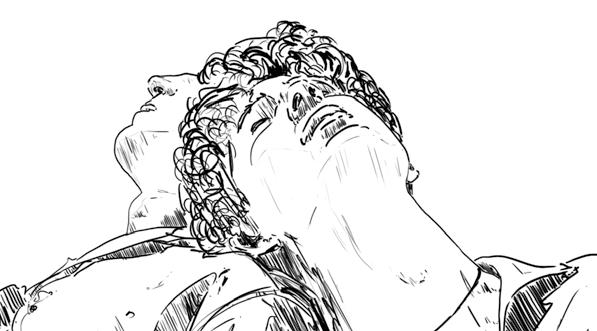
3 minute read
What Makes a Man?
WHAT MAKES Man? WHAT MAKES A
Advertisement
osie Matheson, a portrait photographer from Brighton, has spent the last four years photographing boys around the world with the aim of ‘capturing the softer side of the male experience’ and documenting how masculinity is perceived in the modern world. She studied photography at A Level, and has now progressed to freelance photography, with high-profile clients such as Nike, Kodak, and Getty Images. Her most recent project is ‘Boys – The Film’, in collaboration with London-based producer Kaj Jefferies.
Matheson and Jeffries’ film asks the question: What makes a man?
The footage juxtaposes stereotypical masculine behaviour with softer aspects of masculinity, and often features physical strength contrasting emotion and vulnerability.
MEN WHO DON’T FEEL ACCEPTED BY OTHER MEN
“Being a man means whatever you want it to be.”
One man recounts a story in which he begged his mother for a pair of pink, sparkly high heels at the age of 11. Builders working on their house at the time quizzed her, and disagreed with her son wearing feminine shoes.
“I don’t need to be stereotyped by you.”
Another man expresses his struggle growing up identifying as a gay, black man from South London. He’s dancing in a park, physically expressing his emotions. He felt as if being ‘gay’ meant he had to conform to a stereotype, putting him in a box. Vulgar slang directed at him by his peers made him not want to identify with the word ‘gay’.
“I don’t like being in an environment where I don’t have the freedom to be who I really am.” VIOLENCE AND MASCULINITY
A man and his young son are sat together on a wall. They’re discussing how they would describe themselves as a person, joking about the freckles on their faces. The father describes a time when he was stabbed outside a club and was left in a coma. This was a wake-up call for him. He defines masculinity as looking after your family, and providing whatever he can for his son, so that he has the freedom to explore and learn.
“I’ll slave away, so that he can relax.”
Another man is sat in the front seat of a car, doors open. He describes the civil war in his home country, comparing it to the UK. He feels that now he’s not surrounded by violence, this is how life should be like.
“I grew up in a really rough environment in northern Uganda.”
He recalls a time where he went to a friend’s brother’s funeral. He was so upset, he started crying in front of the other men. He was the only man crying, and his friends were telling him to stop crying and ‘be a man’.
THE BREAKDOWN OF STEREOTYPICAL MALE BEHAVIOUR
A shirtless man is standing over the camera, smirking. The composition suggesting power and dominance.
“You don’t have real big men any more.”
He feels that today’s society is demasculinising for some, particularly for those who have been brought up in a certain way by someone who might be perceived as an ‘ultra-masculine figure’. He believes it’s okay to aspire to be a breadwinner, despite how society’s views are changing.

“I don’t think you have to go around and think you’re this big ‘I am’.”
A sphynx cat is perched on a man’s shoulder. He explains that most men think he’s gay because of his musical taste and apparent lack of machismo.
His brother came around to visit and refused to play with his cat because “blokes don’t play with cats.” His brother thinks he can only be seen playing with a large, stereotypically ‘macho’ dog like a pitbull.
“You are a product of your environment.”
A man and his dog are sat on a bench. The man describes how he sees his dog as his best friend, and that he doesn’t feel he owns him, rather knows him. He says that men who grew up with just their mothers express more feminine qualities, and aren’t afraid to show emotion.
“It’s a fear of being seen as less masculine.”
Two brothers are sat in a skate park. They describe stereotypical masculinity as having to put on an angry front, and being conscious of your appearance. Neither of the pair have ever felt a need to hide behind this front as they’re happy with themselves how they are.






